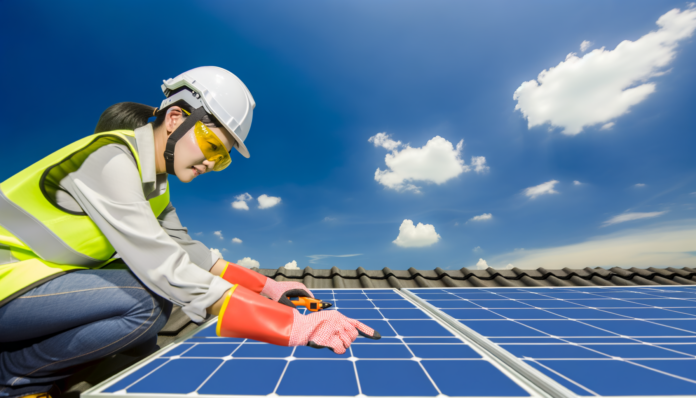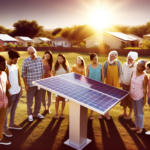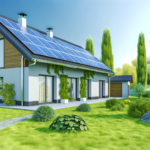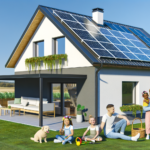Introduction to Solar Equipment Safety
Importance of Safety in Solar Equipment Handling
The handling and installation of solar equipment come with significant safety responsibilities. Solar plants, being electricity-generating power stations, pose various hazards that can result in severe injuries or even fatalities if not managed properly. The ultimate responsibility for ensuring the health and safety of individuals in and around the solar plant lies with the Asset Owner. However, the practical implementation of safety measures is often subcontracted to Operation and Maintenance (O&M) service providers.
Proper safety protocols are essential to mitigate risks associated with solar equipment. These include thorough hazard identification, careful planning of works, briefing of procedures, and regular, well-documented inspections and maintenance. Ensuring that all personnel are adequately trained and equipped with the necessary personal protective equipment (PPE) is also crucial. By adhering to these safety measures, the risks associated with solar equipment handling can be significantly reduced, ensuring a safer working environment for all involved.
Common Risks and Hazards
Working with solar equipment involves several common risks and hazards that must be addressed to ensure safety:
- Electrical Hazards: The risk of electrocution is significant, especially when working with high-voltage (HV) and low-voltage (LV) electrical systems. Proper training and supervision are essential to manage these risks.
- Slips, Trips, and Falls: The terrain and equipment on solar farms can lead to slips, trips, and falls. This risk is heightened when working at heights, such as on rooftops or carports.
- Strains and Sprains: Lifting heavy equipment, often in awkward spaces or from uneven ground, can cause strains and sprains.
- Fire Hazards: Electrical fires are a common risk, along with other sources of combustion such as flammable liquids and grass fires.
- Weather Conditions: Extreme weather conditions, including electrical storms, can pose significant risks. Solar farms must be vacated during electrical storms to avoid lightning strikes.
- Wildlife and Livestock: Encounters with wildlife and livestock can present various hazards, including bites and stings from insects and animals.
Understanding these risks and implementing appropriate safety measures can help prevent accidents and injuries, ensuring a safer working environment for all personnel involved in solar equipment handling.
Target Audience and Relevance
The information on solar equipment safety is relevant to a wide range of stakeholders, including:
- Asset Owners: They hold the ultimate responsibility for ensuring the safety and compliance of the solar plant with health and safety regulations.
- O&M Service Providers: These entities are responsible for the practical implementation of safety measures and ensuring that all personnel are adequately trained and equipped.
- Installation and Maintenance Personnel: Workers directly involved in the installation and maintenance of solar equipment need to be aware of the risks and trained in safe handling practices.
- Contractors and Subcontractors: Any third-party contractors working on the solar plant must comply with established safety protocols and procedures.
- Emergency Responders: Firefighters and other emergency responders need to understand the specific hazards associated with solar equipment to respond effectively in case of an emergency.
By targeting these key audiences, the aim is to promote a culture of safety and ensure that all individuals involved in the handling and installation of solar equipment are well-informed and prepared to manage the associated risks effectively.
Personal Protective Equipment (PPE) for Solar Installation
Essential PPE Items
When working on solar installations, the use of Personal Protective Equipment (PPE) is crucial to ensure the safety of all personnel involved. Here are some essential PPE items that every solar installer should have:
- Hard Hats: Protects against head injuries from falling objects or accidental bumps.
- Safety Glasses or Goggles: Shields the eyes from debris, dust, and potential chemical splashes.
- Gloves: Provides protection against cuts, abrasions, and electrical shocks. Insulated gloves are particularly important when handling live wires.
- Safety Shoes: Footwear with toe guards and metatarsal guards to protect against heavy objects and electrical hazards.
- Hearing Protectors: Essential when working near noisy equipment like pile drivers.
- Reflective Clothing: Enhances visibility, especially when working near traffic or in low-light conditions.
- Fall Protection Gear: Includes harnesses and lanyards to prevent falls when working at heights.
Proper Usage and Maintenance of PPE
Using PPE correctly and maintaining it properly is as important as having the right equipment. Here are some guidelines:
- Regular Inspections: PPE should be inspected before each use to ensure it is in good condition. Look for signs of wear and tear, such as cracks, fraying, or other damage.
- Proper Fit: Ensure that all PPE fits correctly. Ill-fitting equipment can be uncomfortable and may not provide adequate protection.
- Cleaning and Storage: Clean PPE according to the manufacturer’s instructions and store it in a clean, dry place. Avoid exposing PPE to extreme temperatures or direct sunlight when not in use.
- Replacement: Replace any damaged or worn-out PPE immediately. Do not attempt to repair PPE unless it is specifically designed to be repairable.
- Training: Workers should be trained on the correct use of PPE, including how to put it on, take it off, and adjust it for maximum protection.
PPE for Different Weather Conditions
Weather conditions can significantly impact the effectiveness and comfort of PPE. Here are some considerations for different weather scenarios:
- Hot Weather: In hot conditions, choose lightweight, breathable materials for clothing and gloves. Ensure that hard hats have ventilation and consider using sweatbands. Hydration is also crucial to prevent heat-related illnesses.
- Cold Weather: In cold conditions, use insulated gloves and footwear. Layer clothing to maintain warmth while ensuring mobility. Be mindful of frostbite and hypothermia risks.
- Wet Weather: Waterproof PPE, such as rain jackets and boots, is essential. Ensure that gloves and footwear provide good grip to prevent slips and falls.
- Windy Conditions: Secure loose clothing and ensure that hard hats are properly fastened. Wind can also increase the risk of debris, so eye protection is particularly important.
By adhering to these guidelines and ensuring the proper use and maintenance of PPE, solar installers can significantly reduce the risk of accidents and injuries, creating a safer working environment for everyone involved.
Safe Handling and Installation Practices
Pre-Installation Safety Checks
Before beginning any solar panel installation, conducting thorough pre-installation safety checks is crucial. These checks help identify potential hazards and ensure that all necessary precautions are in place. Start by inspecting the work area for any obstacles, such as loose debris, slippery surfaces, or overhead power lines. Ensure that all tools and equipment are in good working condition and that personal protective equipment (PPE) is available and in use. Additionally, review the manufacturer’s guidelines and safety protocols to ensure compliance with industry standards.
Safe Lifting and Carrying Techniques
Handling solar panels and related equipment requires proper lifting and carrying techniques to prevent injuries. Solar panels can be heavy and awkward to maneuver, so it’s essential to use safe lifting practices. Always lift with your legs, not your back, and avoid twisting your body while carrying heavy loads. When possible, use mechanical aids such as dollies, hoists, or ladder lifts to transport panels to the installation site. Working in teams can also help distribute the weight and reduce the risk of strain or injury.
Proper Use of Tools and Equipment
Using the right tools and equipment correctly is vital for a safe and efficient installation process. Ensure that all tools are appropriate for the task and are in good working condition. For example, use insulated tools when working with electrical components to prevent electric shocks. Follow the manufacturer’s instructions for each tool and piece of equipment, and never use damaged or malfunctioning items. Regularly inspect and maintain your tools to ensure they remain safe and effective.
Avoiding Electrical Hazards
Electrical hazards are a significant concern during solar panel installation. To avoid these risks, follow all safety protocols related to electrical systems. Always assume that solar panels are live and handle them with care, as they generate electricity even in low light conditions. When working with electrical components, ensure that the system is de-energized before making any connections or adjustments. Use insulated tools and wear appropriate PPE, such as gloves and safety glasses, to protect against electric shocks and arc flashes. Additionally, be aware of the potential for arc faults and fires, and install arc-fault circuit interrupters (AFCIs) to detect and mitigate dangerous currents.
By adhering to these safe handling and installation practices, solar installers can minimize the risk of accidents and injuries, ensuring a secure and efficient work environment.
Maintenance and Inspection of Solar Equipment
Regular Inspection Routines
Regular inspections are crucial to ensure the longevity and efficiency of solar equipment. These inspections should be scheduled at least twice a year, but more frequent checks may be necessary depending on environmental conditions and system usage. During these inspections, technicians should:
- Check for any physical damage to the panels, such as cracks or chips.
- Inspect the mounting system for signs of wear or corrosion.
- Ensure that all electrical connections are secure and free from corrosion.
- Verify that the inverter is functioning correctly and displaying the appropriate indicators.
- Examine the wiring for any signs of wear, fraying, or exposure to the elements.
Documenting each inspection is essential for tracking the system’s health over time and identifying recurring issues that may need more permanent solutions.
Cleaning and Upkeep
Keeping solar panels clean is vital for maintaining their efficiency. Dust, dirt, bird droppings, and other debris can significantly reduce the amount of sunlight that reaches the photovoltaic cells, thereby decreasing energy production. Here are some best practices for cleaning solar panels:
- Use a soft brush or a leaf blower to remove loose debris.
- For more stubborn dirt, use a hose with a gentle stream of water. Avoid high-pressure washers as they can damage the panels.
- If necessary, use a mild, non-abrasive soap with water and a soft sponge or cloth. Avoid harsh chemicals that can leave residues or damage the panel surface.
- Clean the panels early in the morning or late in the evening to avoid thermal shock, which can occur if cold water is applied to hot panels.
Regular cleaning schedules should be established based on local environmental conditions. For instance, panels in dusty or pollen-heavy areas may require more frequent cleaning.
Identifying and Addressing Wear and Tear
Over time, solar equipment will naturally experience wear and tear. Identifying and addressing these issues promptly can prevent minor problems from becoming major failures. Key areas to monitor include:
- Mounting Systems: Check for rust, loose bolts, and other signs of structural weakness. Tighten any loose components and replace corroded parts as needed.
- Electrical Components: Inspect for signs of overheating, such as discoloration or melting. Ensure that all connections are tight and free from corrosion.
- Inverters: Monitor the inverter’s performance metrics regularly. Any significant deviations from normal operation should be investigated immediately.
- Wiring: Look for signs of wear, such as fraying or exposure to the elements. Replace any damaged wiring to prevent electrical faults.
In addition to these routine checks, it is advisable to have a professional technician conduct a more thorough inspection annually. This can help identify less obvious issues that may require specialized knowledge or equipment to detect.
By adhering to these maintenance and inspection practices, solar equipment can operate efficiently and safely for many years, maximizing both energy production and the return on investment.
Emergency Procedures and First Aid
Common Injuries and Immediate Responses
When handling solar equipment, several common injuries can occur, including electrical shocks, burns, cuts, and falls. Understanding how to respond immediately to these injuries can significantly reduce their severity.
- Electrical Shocks: If someone suffers an electrical shock, immediately disconnect the power source if it is safe to do so. Do not touch the victim with your bare hands if they are still in contact with the electrical source. Use a non-conductive object to separate them from the source. Call emergency services and begin CPR if the person is unresponsive or not breathing.
- Burns: For thermal burns, cool the burn area with running water for at least 10 minutes. Do not apply ice or ointments. Cover the burn with a sterile, non-adhesive bandage. For chemical burns, rinse the affected area with water for at least 20 minutes and remove any contaminated clothing.
- Cuts and Lacerations: Clean the wound with water and apply pressure with a clean cloth to stop the bleeding. Once the bleeding has stopped, cover the wound with a sterile bandage. Seek medical attention if the cut is deep or if bleeding does not stop.
- Falls: If a fall occurs, do not move the injured person unless they are in immediate danger. Check for responsiveness and breathing. Call emergency services and provide first aid for any visible injuries while waiting for professional help.
Emergency Contact Information
Having a list of emergency contact information readily available is crucial for quick response during an emergency. This list should include:
- Local Emergency Services: Dial 911 for immediate assistance from police, fire, or medical services.
- Nearest Hospital: Include the address and phone number of the closest hospital or urgent care facility.
- Electric Provider: Contact information for the local electric utility company to report electrical hazards or outages.
- Solar System Contractor: The phone number and email of the company that installed the solar system for technical support and emergency repairs.
- First Aid Trained Personnel: Names and contact details of individuals on-site who are trained in first aid and CPR.
First Aid Kit Essentials
A well-stocked first aid kit is essential for addressing injuries promptly. Ensure your first aid kit includes the following items:
- Adhesive Bandages: Various sizes for minor cuts and abrasions.
- Sterile Gauze Pads: For dressing larger wounds.
- Adhesive Tape: To secure bandages and dressings.
- Antiseptic Wipes: For cleaning wounds to prevent infection.
- Scissors: For cutting tape, gauze, or clothing.
- Tweezers: For removing splinters or debris from wounds.
- Instant Cold Packs: To reduce swelling and pain from injuries.
- Burn Cream: For minor burns to soothe and protect the skin.
- CPR Face Shield: For safe administration of CPR.
- Gloves: Disposable gloves to protect both the injured person and the responder.
- First Aid Manual: A guide to provide instructions on how to handle various medical emergencies.
By being prepared with the right knowledge, contact information, and first aid supplies, you can effectively manage emergencies and provide immediate care to those injured while handling solar equipment.
Training and Certification
Importance of Proper Training
Proper training is the cornerstone of safety in the solar industry. Handling solar equipment involves various risks, including electrical hazards, falls, and mechanical injuries. Therefore, it is crucial that all personnel involved in the installation, maintenance, and operation of solar systems are adequately trained. **Training ensures that workers are aware of the potential hazards and know how to mitigate them effectively.**
Training programs typically cover a wide range of topics, including electrical safety, proper use of personal protective equipment (PPE), safe lifting techniques, and emergency response procedures. **Well-trained employees are not only safer but also more efficient and productive, reducing the likelihood of accidents and downtime.**
Moreover, proper training is often a legal requirement. Regulatory bodies mandate that workers in the solar industry must have specific certifications to ensure they are competent to perform their tasks safely. Failure to comply with these regulations can result in severe penalties and jeopardize the safety of the entire operation.
Available Certification Programs
Several certification programs are available to ensure that solar industry professionals are adequately trained. These programs are designed to meet the specific needs of different roles within the industry, from installers to maintenance technicians and engineers.
1. **North American Board of Certified Energy Practitioners (NABCEP)**: NABCEP offers a range of certifications, including PV Installation Professional, PV Technical Sales, and PV System Inspector. These certifications are widely recognized and respected in the industry.
2. **Occupational Safety and Health Administration (OSHA)**: OSHA provides various safety training programs, including the OSHA 10-hour and 30-hour courses, which cover general industry safety and health hazards.
3. **International Electrotechnical Commission (IEC)**: The IEC offers certifications that focus on international standards for electrical installations, including those specific to solar PV systems.
4. **Solar Energy International (SEI)**: SEI provides comprehensive training programs that cover all aspects of solar energy, from basic principles to advanced system design and installation.
**These certification programs not only validate the skills and knowledge of the professionals but also provide them with the credentials needed to advance their careers.**
Continuous Education and Updates
The solar industry is rapidly evolving, with new technologies and best practices emerging regularly. **Continuous education is essential to keep up with these changes and ensure ongoing safety and efficiency.**
Many certification programs require professionals to complete continuing education units (CEUs) to maintain their credentials. These CEUs can be earned through various means, including attending workshops, webinars, and industry conferences, as well as completing online courses.
**Employers should encourage and facilitate continuous education for their employees.** This can be achieved by providing access to training resources, covering the costs of certification renewals, and allowing time off for educational activities.
Additionally, staying updated with the latest industry standards and regulations is crucial. Organizations like the National Renewable Energy Laboratory (NREL) and the Solar Energy Industries Association (SEIA) regularly publish updates and guidelines that can help professionals stay informed.
**In summary, proper training and certification are vital for ensuring safety in the solar industry.** By investing in comprehensive training programs and encouraging continuous education, employers can create a safer, more efficient, and more productive work environment.
Conclusion and Best Practices Recap
Summary of Key Safety Practices
Ensuring safety while handling solar equipment is paramount for both installers and end-users. Here are the key safety practices to remember:
- Personal Protective Equipment (PPE): Always wear essential PPE such as safety glasses, hard hats, gloves, and steel-toed boots. Ensure that PPE is suitable for different weather conditions and is well-maintained.
- Pre-Installation Safety Checks: Conduct thorough site assessments to identify potential hazards. Verify that all tools and equipment are in good working condition.
- Safe Handling and Installation: Use proper lifting techniques to avoid strains and sprains. Follow manufacturer guidelines for mounting solar panels and ensure secure electrical connections.
- Electrical Safety: Implement Lockout-Tagout (LOTO) procedures, proper grounding, and use of insulated tools to prevent electrical hazards. Regularly inspect electrical components for wear and tear.
- Regular Maintenance and Inspections: Schedule periodic check-ups to identify and address any issues. Clean solar panels regularly to maintain efficiency and inspect for physical damage or corrosion.
- Emergency Preparedness: Develop and practice an emergency response plan. Ensure that first aid kits are readily available and that all personnel are trained in emergency procedures.
- Training and Certification: Ensure that all personnel handling solar equipment are properly trained and certified. Continuous education and updates on safety protocols are essential.
Encouragement for Safe and Sustainable Solar Use
Adopting solar energy is a significant step towards a sustainable future. By prioritizing safety, you not only protect yourself and your team but also ensure the longevity and efficiency of your solar installations. Remember, a well-maintained solar system not only maximizes energy output but also contributes to a greener planet. Embrace these best practices and make safety an integral part of your solar journey. Your commitment to safety and sustainability will inspire others to follow suit, creating a ripple effect that benefits the entire community.
Additional Resources and References
For further information and detailed guidelines on solar equipment safety, consider the following resources:
- OSHA Solar Energy Safety Guidelines
- National Electrical Code (NEC)
- Solar Power World
- Solar Energy International (SEI)
- U.S. Department of Energy – Solar Energy Technologies Office
By leveraging these resources, you can stay informed about the latest safety standards and best practices in the solar industry. Stay safe, stay informed, and continue to harness the power of the sun responsibly.






